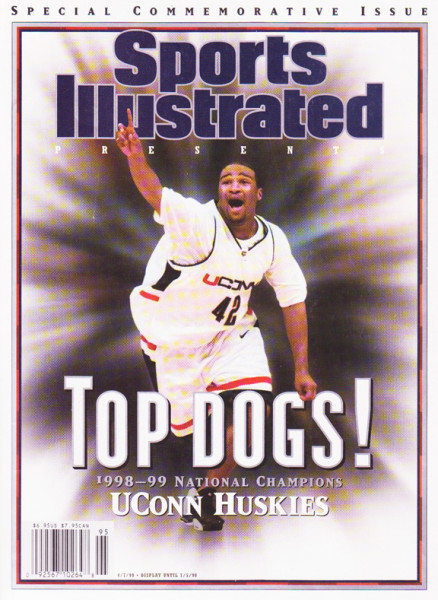The WWL today began a thought-provoking series of articles about which college hoops programs have been the “best” over the last ten years. We’ll track this over the next few days, chiming in where appropriate. Their expert panel apparently consisted of Katz, Bilas, Forde, Glockner and Lunardi. Good thing that the human smegma known as Dick Vitaletrick wasn’t involved or Duke would have held all ten positions.
Duke came out on top anyway, with Michigan St. and UConn tied for second. Florida, Kansas, UNC, Kentucky, Arizona, Maryland and Syracuse rounded out the list – all eight schools who won titles during this period + Arizona and Kansas. While we tend to agree with the ten programs listed, we would re-arrange the order a bit. Our criteria for excellence is fairly set: first and foremost, NCAA Tournament success matters most. To be considered the best program, you must make it almost every year, you must win while you’re there, and you must go to Final Fours and win championships. Since every one of these programs starts each season with one primary goal – to win the national championship – that must be the foremost consideration. Here’s the ultimate arbiter – would any team’s fans trade their decade of success, however it is measured, for another championship? Of course they would, which is why UConn and Florida with two titles each have been the “best” programs of the last decade in our analysis.


Calhoun’s Huskies and Donovan’s Gators lead our list.
Multiple Titles
1. UConn – two different titles with two different teams (1999 and 2004), and they beat ESPN’s #1 Duke both times en route to the titles.
2. Florida – we pick UConn over Florida because it is harder to win with two completely different teams than a stacked one which comes back to do it again. But as of now, Florida is without question the Team of the 00s.
Now, we consider the teams with one title during this period. Sorry Kansas and Arizona, but again, their fans would happily trade all their conference titles and #1 seeds for just one Maryland 2002 or Syracuse 2003 run. Especially KU – how long has it been now – coming up on 20 seasons, right? At least Arizona just missed their 1997 title by this rather arbitrary ESPN time frame.
One Title
3. Duke – this is where the Blue Devils belong over the last decade. They have the best resume of the one-title teams, and have avoided significant “down” seasons compared with the other schools (nine straight NCAA Sweet 16s or better from 1998-2006).
4. Michigan St. – the Spartans have been to one additional F4 than Duke, but have mostly been pedestrian (three first round NCAA losses) since their glorious run from 1999-2001.
5. North Carolina – the Doherty years of 2000-2003 (one NCAA win and an 8-20 debacle) aren’t compensated enough by three F4s and one title to overcome Michigan St.
6. Kentucky – we’re talking about one F4 leading to one title in 1998, but the Cats were consistently good, if not great, throughout this period (ten straight NCAA second rounds and four elite eights).
7. Maryland – cf. with the Terps, who although they went to back-to-back F4s in 2001-02 and won their first national title in the latter, they have really fallen hard in recent years – only two NCAA wins in the last four seasons.
8. Syracuse – the other one-title teams would have a decent argument to be included in the top eight even if they’d not won a title , but Syracuse probably would not, having numerous middling seasons surrounding that magical run in 2003.
Best of the Rest
9. Kansas – this would probably have been true for almost any ten-year period throughout the 90s and 00s that you choose because they’re always very good. Kansas just cannot seem to get back over the hump and win another national title despite multiple F4s and several absolutely loaded teams.
10. Arizona – of course, if this list was created last year, Arizona probably would have finished in the top five because of their 1997 title; nevertheless, the Cats have had several excellent teams like Kansas that were good enough to win it all without a truly bad season during this period.
Others considered: UCLA (two F4s), Ohio St. (two F4s), Wisconsin, Gonzaga, Stanford, Illinois, Texas, Oklahoma St.




















































